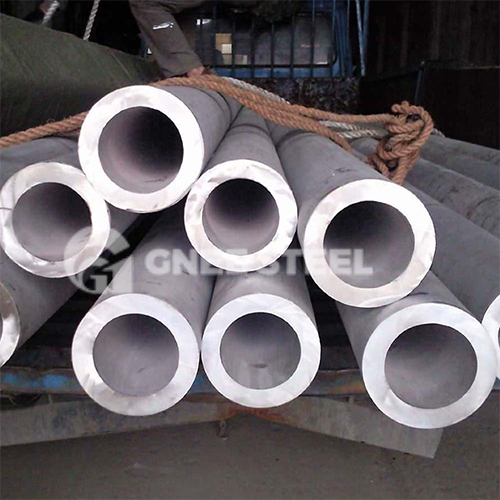ASTM A312, ASTM A213, EN 10216-5, JIS G3459 Stainless steel seamless pipe is a long strip of steel made from metal material, with a hollow cross-section and no seams, with a length of 4-8 meters and a wall thickness of 3-40mm (wall thickness directly affects economic efficiency and processing cost; thicker walls offer better economic efficiency, while thinner walls significantly increase processing costs).
By rolling method, it is classified into hot-rolled, hot-extruded, and cold-drawn types. Its metallographic structures include semi-ferritic semi-m martensitic, martensitic, and austenitic types. Hot-rolled pipes have a diameter range of 54-480mm, while cold-drawn pipes range from 6-200mm.
The production process involves hot-rolling and cold-drawing. Hot-rolling forms the pipe by heating a round billet, piercing it, and shaping it through three-roll skew rolling. Cold-drawing requires multiple cold-rolling passes after annealing and pickling, but may result in surface defects such as pitting, black spots, and uneven wall thickness.
Main Applications:
- Building water supply systems
- Hot water supply pipelines
- High-pressure pipelines
- Mechanical structural materials
Testing Process (Offline):
- Hydrostatic pressure testing
- Chemical analysis
- Corrosion testing
Surface Quality Requirements:
- No cracks or folds
- Straightness defects strictly controlled based on wall thickness ratio
Advantages & Limitations:
- Advantages: Performs well in high-pressure and high-strength applications.
- Limitations: Higher cost for fixed-length cutting and lower surface brightness.

Specification
Diameter: 1/2 inch to 24 inches (21.34 mm to 609.6 mm)
Wall Thickness: 0.5 mm to 50 mm
Standards: ASTM A312, ASTM A213, EN 10216-5, JIS G3459
Material: 304/304L, 316/316L, 321, 310S, 904L, Duplex 2205
Production Process
Billet Preparation: High-quality stainless steel billets are heated to a high temperature.
Extrusion: The billet is extruded through a die to form a hollow shell.
Cold Drawing: The pipe is further processed through cold drawing to achieve precise dimensions and surface finish.
Heat Treatment: Solution annealing is performed to restore microstructure and enhance properties.
Inspection: The pipes undergo rigorous testing, including ultrasonic and hydrostatic tests, to ensure quality.
